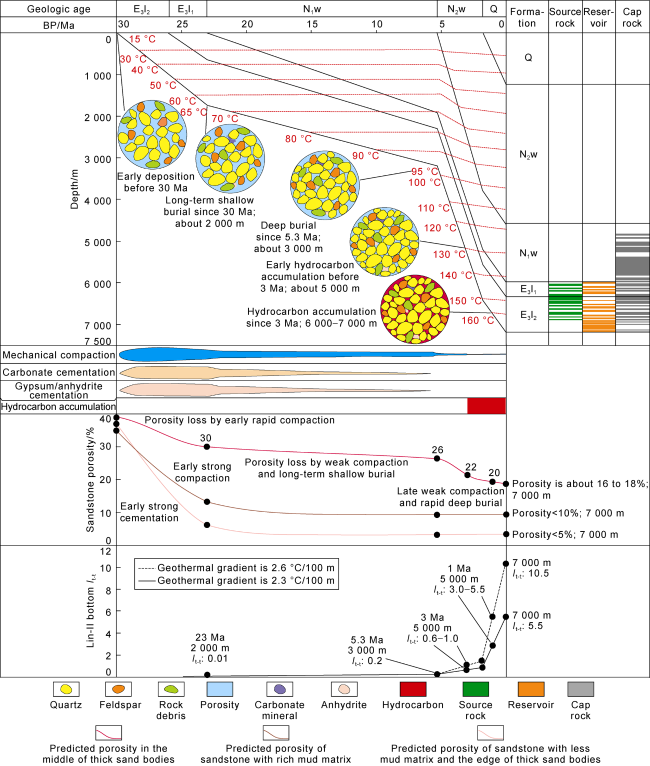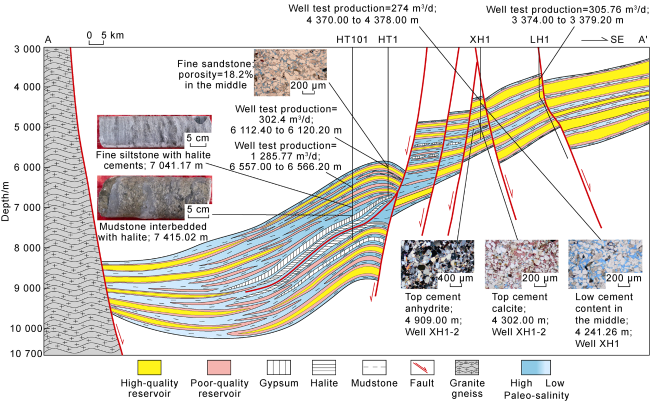Geothermal field is a key factor controlling the diagenetic evolution of reservoir rocks. As the geothermal gradient increases, the water-rock interaction in sandstone is accelerated, and so is the mechanical compaction-the compaction rate in the area with a high geothermal-gradient is considerably higher than that in the area with a low geothermal gradient
[18-19]. The current geothermal gradient of the Linhe Depression is (2.0-2.6) °C/100 m and averaged 2.3 °C/100 m (relatively low). The measured core porosity versus burial depth shows that the average vertical porosity reduction rate of the reservoir is (2%-3%)/1 000 m. It is low compaction-induced porosity reduction (
Fig. 3d). Based on the restored burial-thermal history (
Fig. 5), the
It-t of the Linhe Formation reservoir at variable burial depths can be calculated. The
It-t is about 8 (
Fig. 6) at 6 000 m. Moreover, the
It-t presents a logarithmic correlation with the compaction-induced porosity reduction. Specifically, for the reservoirs with similar grain sizes, interstitial material contents and sorting coefficients, the increase in
It-t is associated with the growth of the compaction-induced porosity reduction (
Fig. 7). We simulated the correlation between
It-t and depth in a setting with the similar burial model and lithology to the Linhe Formation reservoir, and found that at 3.0 °C/100 m and 3.5 °C/100 m, the
It-t values are about 200 and 1 500, respectively, at 6 000 m. They are much higher than those of the Linhe Formation sandstone at the same burial depth.
It-t versus depth and
It-t versus compaction-induced porosity reduction illustrate that at the same depth, the reservoir in the area with a high geothermal gradient presents a
It-t value higher than that in the area with a low geothermal gradient, and this higher
It-t value is associated with higher compaction-induced porosity reduction. In the case of the low geothermal gradient of the Linhe Depression, deep and ultra-deep reservoirs generally have low
It-t values, low thermal maturity and small compaction-induced porosity reduction.
















